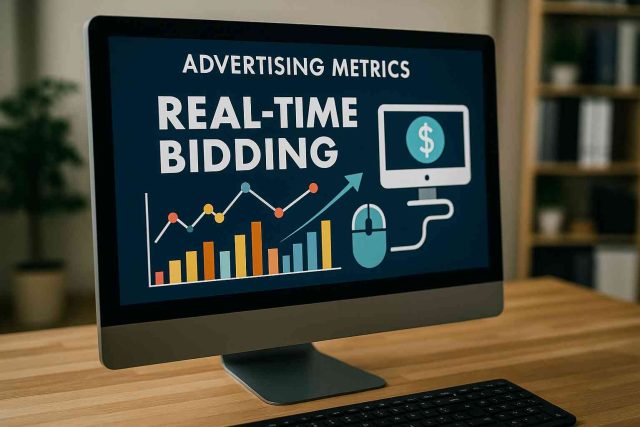Imagine if pharmaceutical ads could reach specific healthcare professionals or patients the moment they searched for relevant content. That’s the promise of Real-Time Bidding (RTB), a programmatic advertising technology that is revolutionizing how pharma marketers reach their audiences. In an industry where precision, compliance, and personalization are essential, RTB offers a scalable, data-driven solution that aligns perfectly with modern marketing strategies.
Table of Contents
- Understanding Real-Time Bidding in Pharma
- Advantages of Real-Time Bidding for Pharma Marketers
- Addressing Compliance and Privacy in RTB
- Practical Applications and Future Outlook
- Conclusion
- FAQs
Understanding Real-Time Bidding in Pharma
Real-Time Bidding is a form of programmatic advertising where ad impressions are bought and sold through automated auctions in milliseconds. Each time a user visits a webpage, an auction takes place between advertisers, and the highest bidder’s ad is displayed instantly. This allows advertisers to tailor their message in real-time, based on the user’s behavior, device, and location.
In the pharmaceutical sector, RTB represents a shift from broad-based campaigns to precision-targeted messaging. Instead of relying solely on traditional media buys, pharma marketers can now serve relevant ads to specific audiences, such as oncologists, endocrinologists, or patients searching for treatment options like Ozempic or Dupixent.
The immediacy and intelligence behind RTB mean that pharmaceutical brands can drive higher engagement, reduce ad waste, and improve campaign ROI. When integrated with compliant data platforms, RTB also helps maintain strict industry regulations.
Advantages of Real-Time Bidding for Pharma Marketers
One of the key benefits of Real-Time Bidding is precision targeting. Pharma marketers often operate in niche markets, where reaching the right specialist or high-risk patient population can be challenging. RTB enables real-time audience segmentation, allowing ads to be shown only to qualified viewers.
Another advantage is cost efficiency. Because advertisers only pay for impressions served to relevant users, budgets are used more strategically. For brands with expensive therapies or specialty drugs, this ensures every dollar supports potential conversion.
Real-time performance analytics further enhance campaign agility. Marketers can optimize creatives, adjust bids, or shift budgets instantly based on live campaign data. This level of responsiveness is especially valuable during product launches, seasonal awareness months, or formulary changes.
Moreover, RTB supports contextual and behavioral targeting. This means ads can appear alongside relevant editorial content or be triggered by keyword searches. Platforms like eHealthcare Solutions offer access to premium, health-focused publisher networks that maximize relevancy and visibility.
Addressing Compliance and Privacy in RTB
Despite its advantages, Real-Time Bidding in the pharma industry raises important compliance and privacy questions. HIPAA regulations, FDA guidelines, and state-level data privacy laws require careful consideration.
To ensure privacy, advertisers must avoid using personally identifiable health data in the bidding process. Instead, anonymized, consent-based audience segments are often used. These segments may include users who have opted in through condition-specific newsletters or educational portals.
Pharma brands must also collaborate with platforms that understand the nuances of healthcare advertising. Ad creatives must be approved by legal and medical review teams to meet FDA labeling requirements. Targeting parameters should exclude sensitive categories unless explicit consent is obtained.
For these reasons, pharma marketers often work with specialized partners and private marketplaces (PMPs) that offer controlled environments. These setups allow for compliance-friendly RTB while still leveraging the power of automation.
When handled properly, RTB does not compromise ethics or compliance. In fact, it allows for greater control over where, when, and to whom ads are shown, making it a reliable option in a regulated space. Readers can find more strategy examples on Pharma Marketing Network.
Practical Applications and Future Outlook
Pharma marketers are using Real-Time Bidding for a wide range of campaigns, from branded drug awareness to disease-state education. For example, a diabetes drug campaign may target endocrinologists during clinical journal reading sessions or serve banners to patients browsing content about managing A1C levels.
Another common use case is HCP (Healthcare Professional) targeting during conferences or webinars. With geo-fencing and real-time bidding, marketers can reach attendees on mobile devices without needing personal contact data.
Additionally, RTB is being used to retarget previous website visitors. If a patient viewed a copay card page but didn’t redeem it, a follow-up ad can encourage completion. This form of intelligent retargeting helps reinforce brand messaging without being intrusive.
Looking ahead, advances in AI and machine learning will make RTB even more powerful. Algorithms will better predict behavior, optimize creative delivery, and integrate with emerging channels like connected TV and digital audio. However, ongoing regulatory updates will require marketers to stay vigilant.
For those exploring advanced programmatic strategies in healthcare, consultation with digital-first firms like eHealthcare Solutions can provide insight and execution support.
Conclusion
Real-Time Bidding offers pharma marketers a flexible, data-rich advertising model tailored for today’s healthcare ecosystem. It delivers precision, efficiency, and real-time responsiveness—all while navigating the unique compliance needs of the industry. As technology continues to evolve, RTB will likely become a cornerstone of digital pharma campaigns, driving more meaningful engagement with both HCPs and patients.
FAQs
What is Real-Time Bidding in pharmaceutical marketing?
It’s a digital ad buying method where impressions are auctioned in real-time, allowing targeted delivery to specific healthcare audiences.
Why is RTB important for pharma marketers?
RTB enables precise audience targeting, cost-effective media spend, and real-time campaign optimization, which are crucial in niche healthcare segments.
Is RTB compliant with healthcare regulations?
Yes, when executed with anonymized data and reviewed creative, RTB can meet HIPAA and FDA guidelines.
What platforms support pharma-focused RTB?
Networks like eHealthcare Solutions offer health-compliant inventory and targeting tools for RTB in pharma.
Can RTB be used for both branded and unbranded campaigns?
Absolutely. RTB is effective for promoting branded drugs, disease education, patient programs, and HCP outreach.
“This content is not medical advice. For any health issues, always consult a healthcare professional. In an emergency, call 911 or your local emergency services.”
